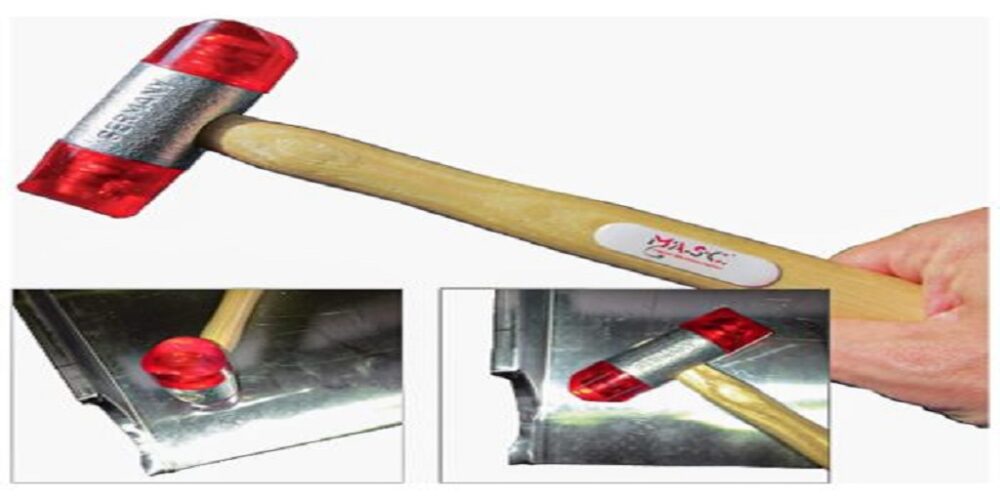When you first learn what a hammer is, you’re going to be liable to develop an image in your mind of a tool with a metal head that has a claw on the back. The basic function of this type of claw hammer is to drive and remove nails. But that is only one type of hammer; hammers are specialized tools that exhibit a mind-boggling amount of variability. Case in point: the number of different styles of sheet metal hammers that you can find in any specialty supply shop, like that of John Stortz & Son, at Stortz.com.
Sheet metal hammers are still hammers, like the iconic claw hammers with which you are no doubt familiar, but they are used for a wide variety of very unique, highly specialized metal working processes that craftsmen and sheet metal workers employ on a daily basis. These are among the most common of them.
1. Raising
Raising is a unique sheet metal working process by which a hammer is used to curve a piece of sheet metal up around a raising stake. It is used to create gentle, graceful, smooth curves and bends in thin metal and can be used to create bowls, vessels and other ornamental work. In sheet metal roofing, a raising hammer can be used with a stake or an anvil to produce precise curved alterations to the sheet metal stock.
2. Bending and Seaming
Specialized hammers can also be used to make fairly precise bends in sheet metal, though they can also be used to create or finish certain types of seams which hold and lock panels of sheet metal together.
3. Planishing or Polishing
Planishing and polishing are very interesting sheet metal working processes that require a very specialized hammer, notably one that has a very finely polished face. In fact, some polishing and planishing hammers have faces that have a near mirror polish.
Other sheet metal forming processes will leave dings, divots and scratches in the surface of sheet metal. These types of hammers are used to “smooth” over these imperfections and “remove” these marks.
4. Chasing
Chasing is the process of user a hammer to drive or “chase” another forming tool, like a wooden wedge. Usually, chasing hammers have a flat face on one side of the head and a curved or ball face on the other; also, these types of hammers are frequently dead blow hammers, to ensure that no force is lost through “bounce back” when striking the chasing implement.
5. General Forming
Finally, with skill and dexterity, sheet metal hammers can be used in just about any metal forming application. With the right level of skills, the proper hammer and perhaps a forming implement like a die or an anvil, a skilled metalworker can create precise shapes, bends, forms and other alterations in sheet metal stock.
Ready to learn more about the different types of processes that a sheet metal hammer can be applied to, or use to execute? Visit Stortz.com to learn more about their many different specialized sheet metal hammers, or get in touch with a member of their team to learn more or ask questions. You can reach them at 888-847-3456 with questions or comments and they’d be more than happy to help.












